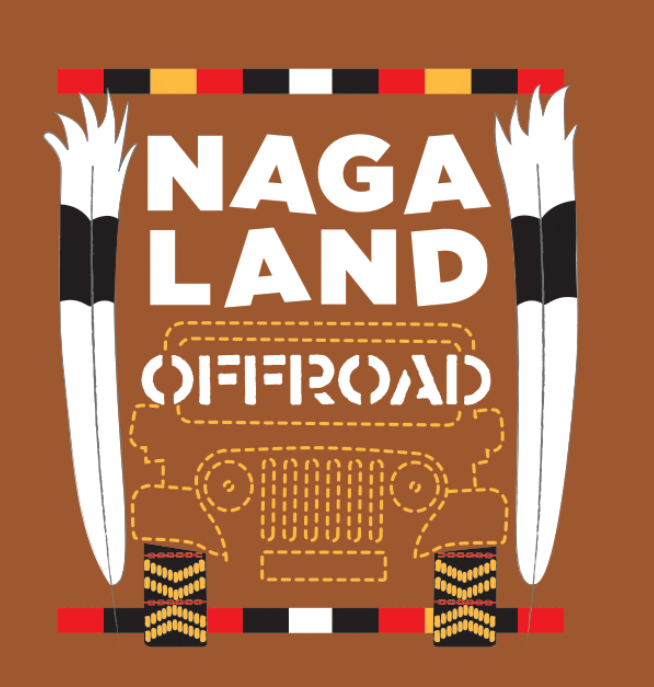About Nagaland
Welcome to the state of colourful festivals, breathtaking valleys, delectable food, and incredible beauty.
Welcome to the Falcon capital of the world
The state of Nagaland was formally inauguarated on December 01, 1963 as the 16th state of the Indian Union. Nagaland is bounded by Assam in the West, Myanmar (Burma) on the east, Arunachal Pradesh and part of Assam on the North and Manipur in the South.
The State consists of 16 (Sixteen) Administrative Districts, inhabited by 17 major tribes along with other sub-tribes. Each tribe is distinct in character from the other in terms of customs, language and dress.
It is a land of folklore passed down the generations through word of mouth. Here, music is an integral part of life; folk songs eulogising ancestors, the brave deeds of warriors and traditional heroes; poetic love songs immortalising ancient tragic love stories; Gospel songs that touch your soul (should you have a religious bend of mind) or the modern tunes rendered exquisitely to set your feet a-tapping.
Nagaland at a glance
The land of nature.
Nature could not have been kinder to Nagaland, sometimes referred to as the Switzerland of the East; the exquisitely picturesque landscapes, the vibrantly colourful sunrise and sunset, lush and verdant flora, this is a land that represents unimaginable beauty, moulded perfectly for a breath taking experience.
Its people belong to the Indo-Mongoloid stock, whose ancestors lived off nature’s abundant gifts, blessed with sturdy formidable dispositions. Above all, the people here are warmhearted and extremely hospitable.
Nagaland is blessed with salubrious climate throughout the year and one can visit it anytime. If one is looking for a quiet getaway, from the hustle and bustle of city life, it provides the right ambience; as life here is laidback and slow – providing a tension free life.
For the adventurous and the intrepid, Nagaland is an ideal place for trekking, rock climbing, jungle camping and offers limitless exploration possibilities in its lush and verdant sub-tropical rain forests which are also a treasure trove of a plethora of medicinal plants.
The land of 17 tribes.
What is even more remarkable is that even within the language of a particular tribe, there are dialects mutually unintelligible. For instance, in some tribes like the Angami, every village has a slightly different variation even within the same dialect-this variance progressively increasing with the geographical distance. This makes inter-tribe and intra-tribe communication very difficult. In the circumstances, English has come to serve as the State language while Nagamese, a kind of pidgin Assamese, has become the common lingua.
The land of colours.
The land of festivals.
Most of these festivals revolve round agriculture, it being the main-stay of Naga society. Over 85% population of Nagaland is directly dependent on agriculture and lives in a thousand and odd villages situated on high hill tops or slopes overlooking verdant valleys humming with murmuring streams. In this blissful setting Nagas enjoy the blessing of Nature with rare gusto striking the onlookers with awe and admiration. In most of the places agriculture consists of monocrop.
Although some religious and spiritual sentiments are inter woven into secular rites and rituals, the pre- dominant theme of the festivals is offering of prayers to a Supreme Being having different names in different Naga dialects. At these festivals, the spirit of Gods is propitiated with sacrifices by the Village Shaman for a bountiful harvest either before the sowing or on the eve of harvest.
The State is replete with festivities throughout the year, as all tribes celebrate their own festivals with a pageantry of colour, music and dance. A common feature is that the festivals revolve around agriculture, the mainstay of Naga economy. These festivals hark back to times prior to the advent of Christianity.
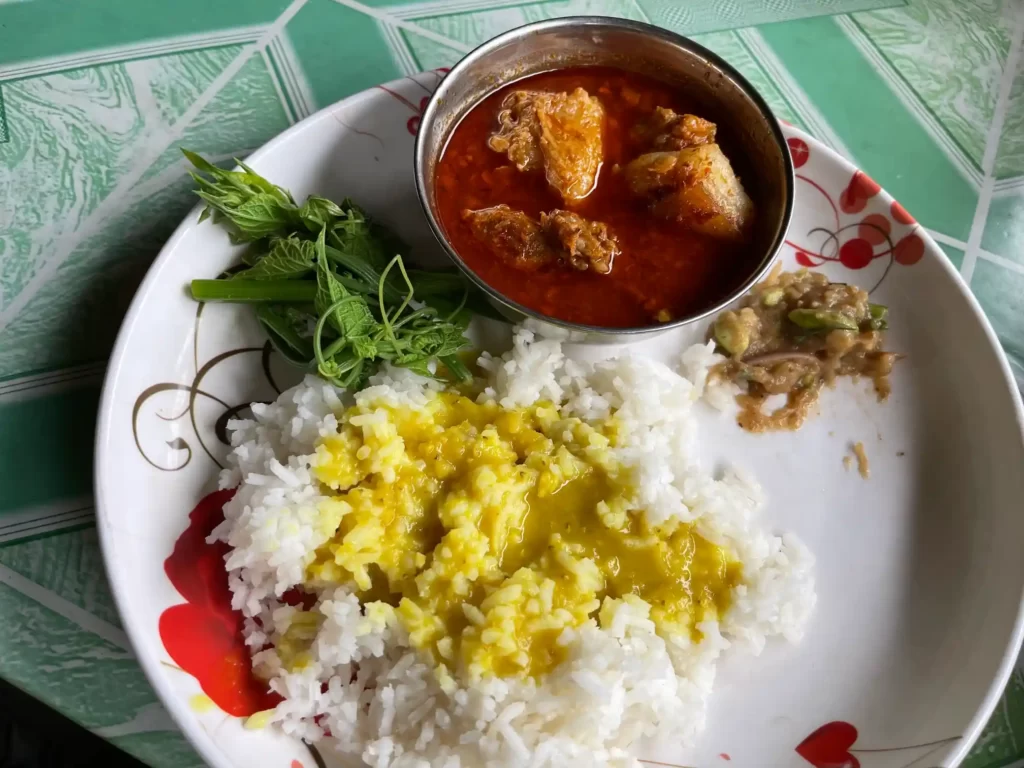
The land of delicious food.
Nagaland is known for its scenic beauty and lush greenery, but one of the lesser known attractions is food of Nagaland. Being one of the major states in the northeastern part of India, Nagaland is an important tourist site and offers a range of authentic delicacies and flavourful cuisines.
Naga cuisine mostly consists of meat and fish, which are often smoked, dried or fermented. Naga people tend to prefer boiled edible organic leaves on their plates, but also prefer spicy food due to their love for the most famous king chilly, also known as Raja Mircha in the northeast.
Naga cuisine also offers a wide variety of pork dishes which are made in an exotic way but with simple and flavorful ingredients. Pork with bamboo shoot is one of common dishes that Naga people love.
Nagaland Fact File
Population: 1.9 million
Districts: 16
Capital: Kohima
Altitude: 1903048 m
Average Rainfall: 18002500 mm
Main Rivers: Dhansiri, Doyang, Dikhu, Tizu, Zungki
Languages: English, Hindi, Nagamese, local dialects
Literacy Rate: 79.55

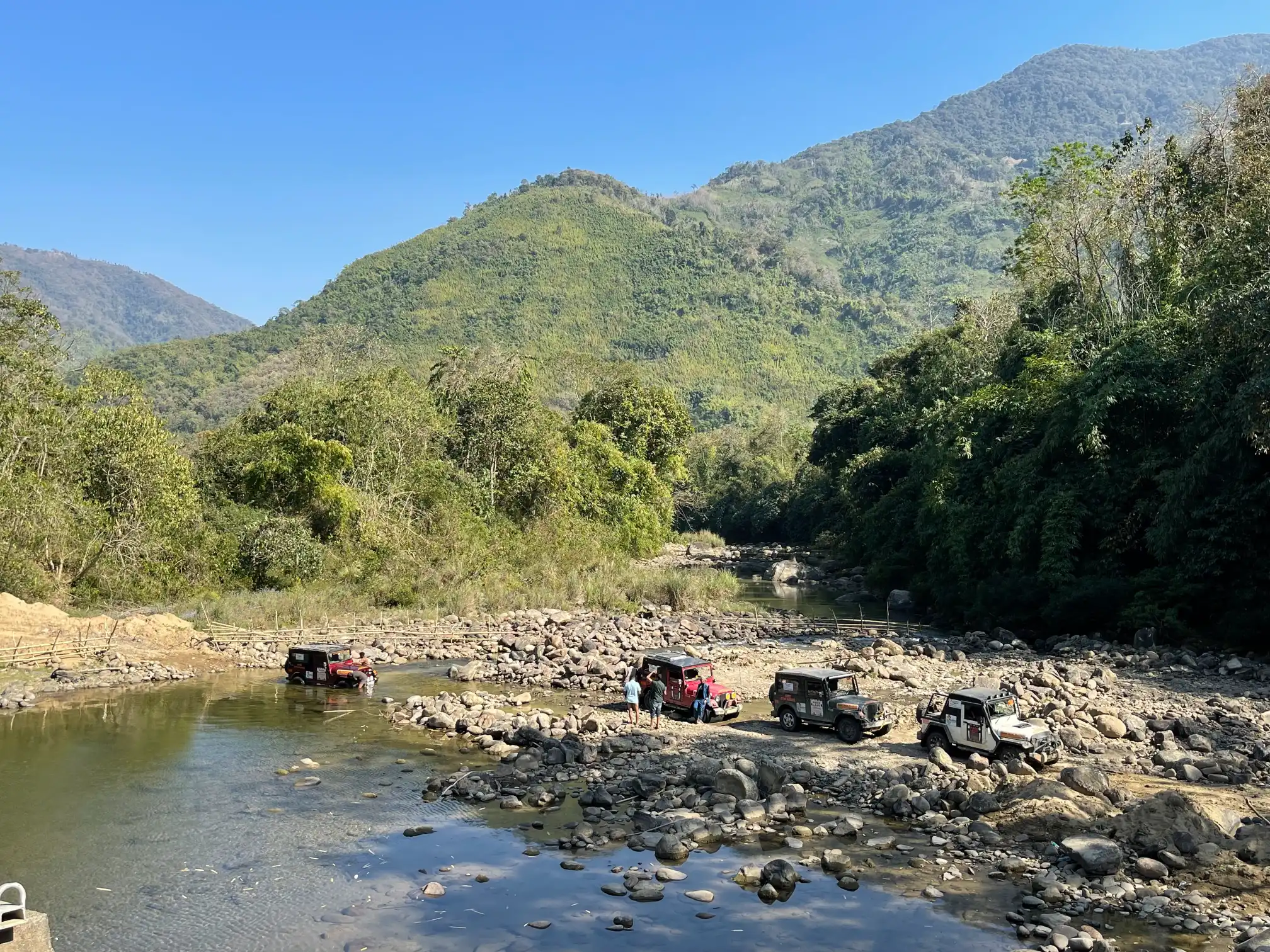
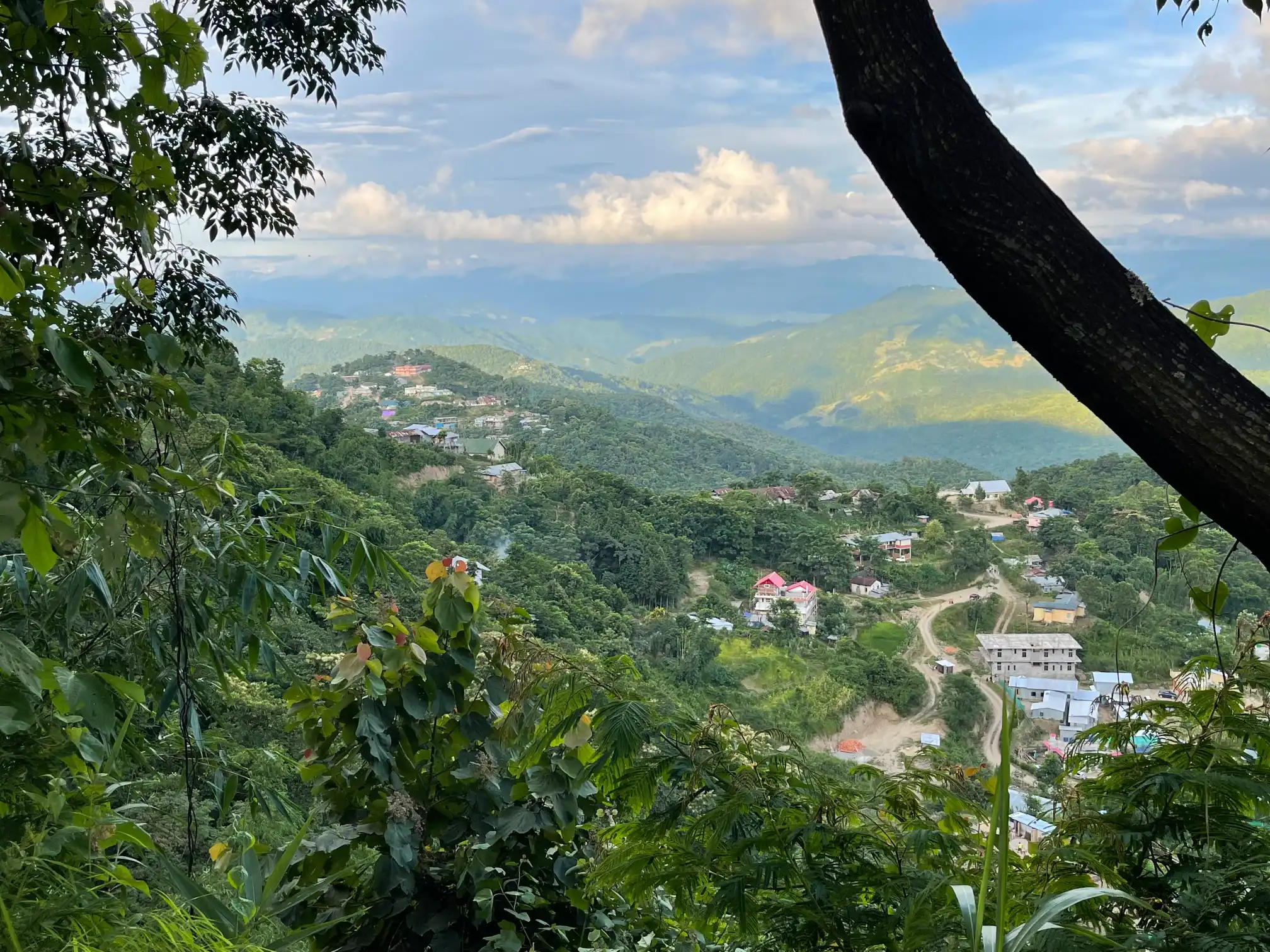

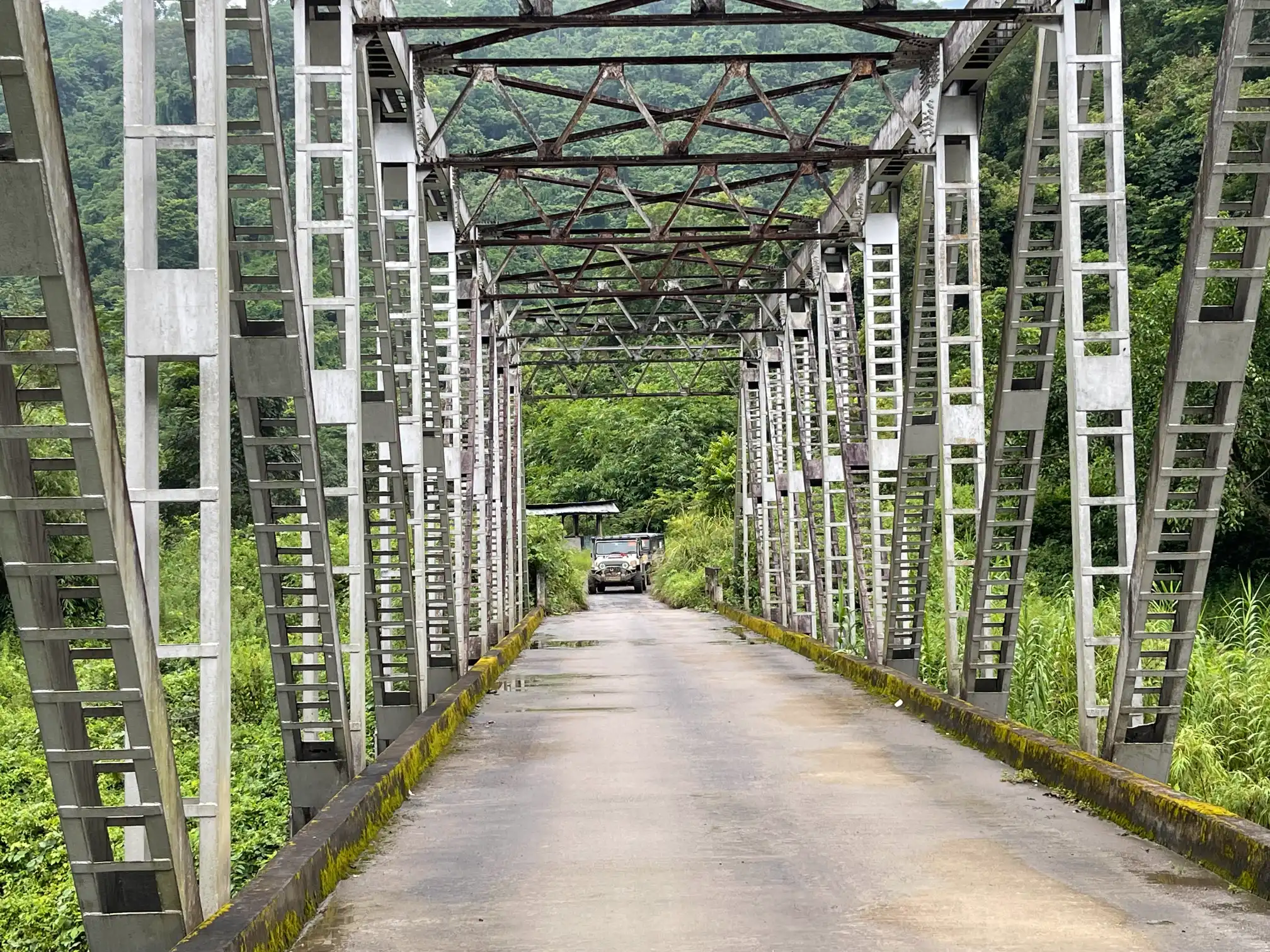



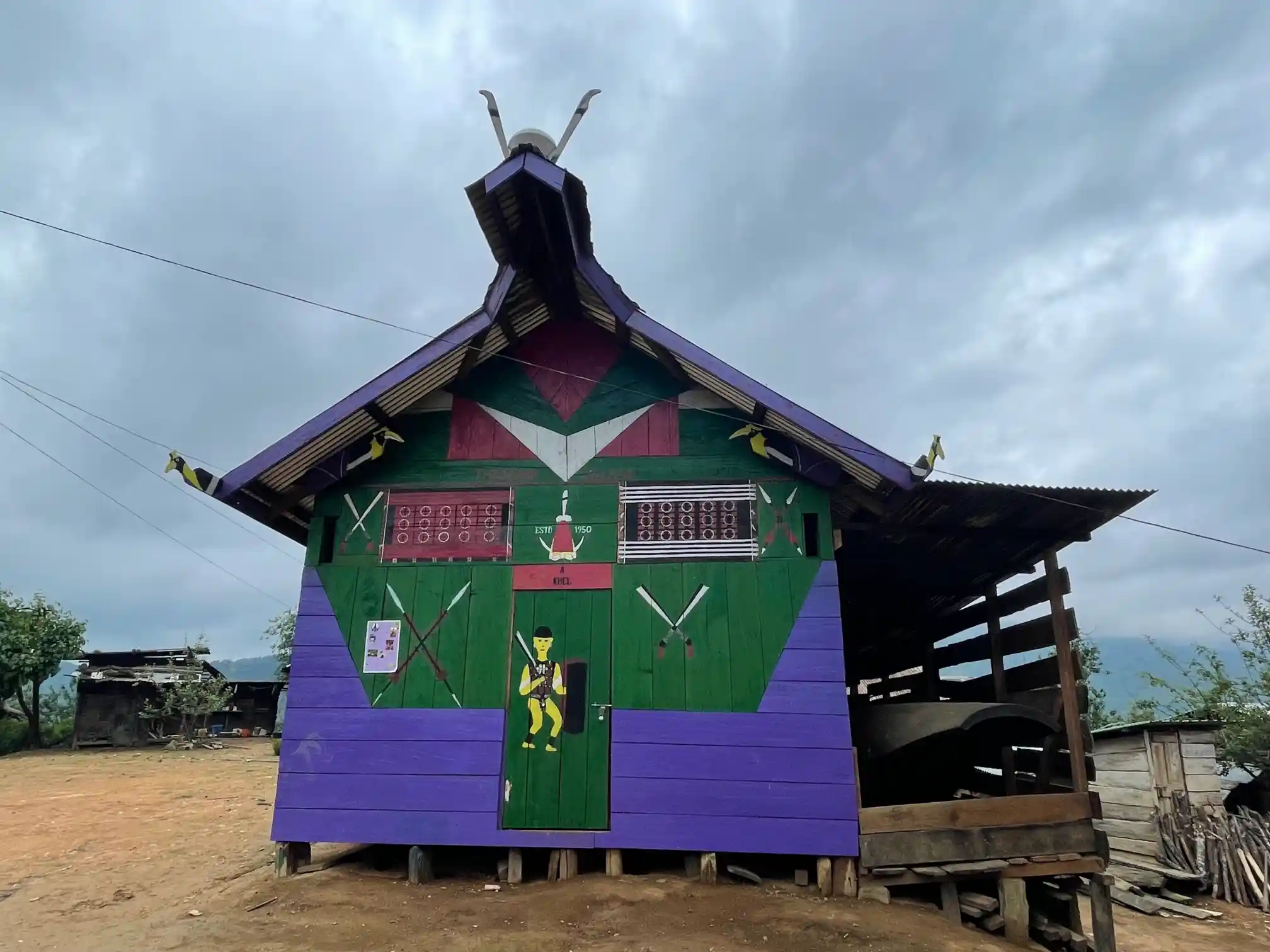
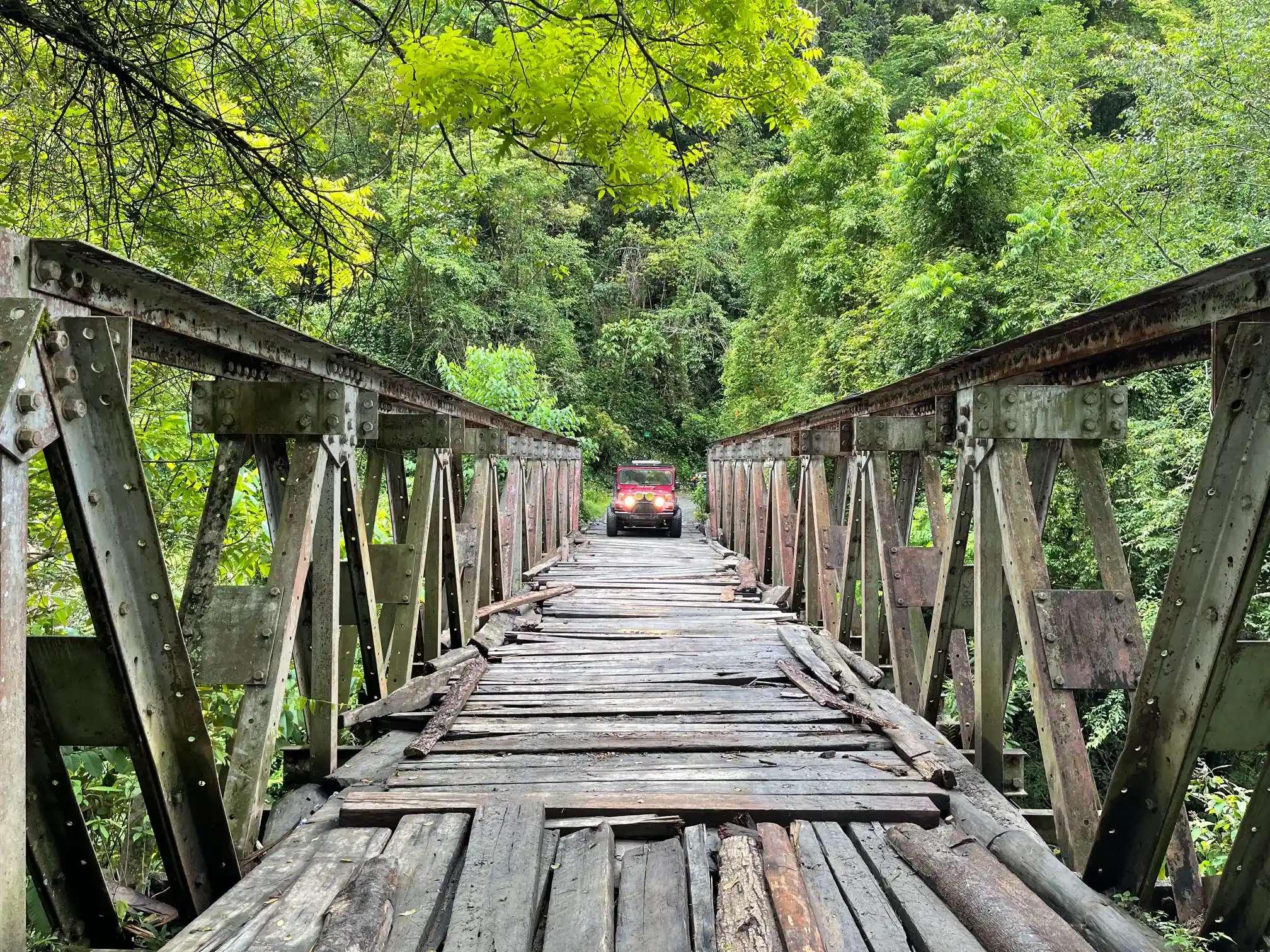


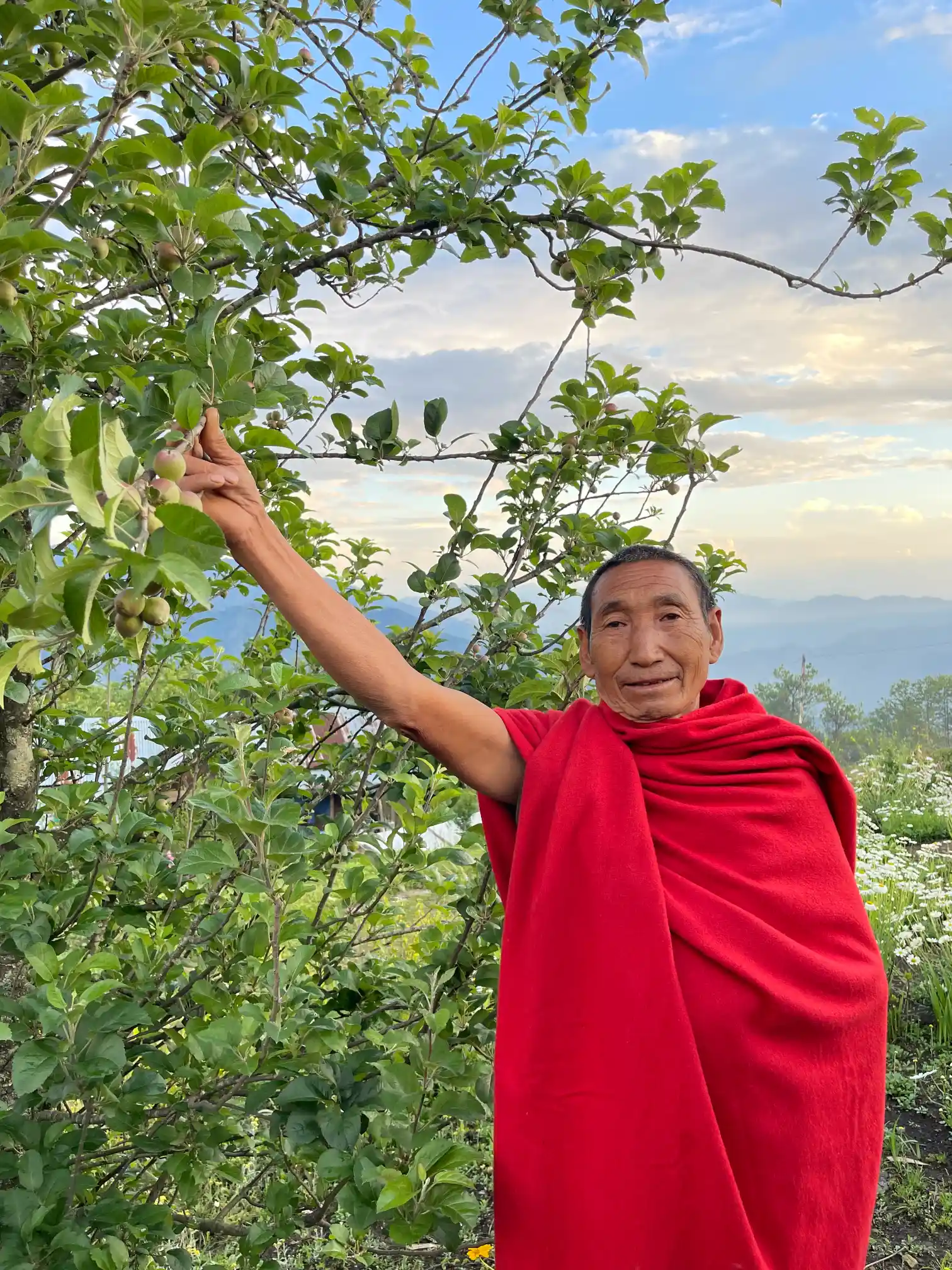

Things not to miss: Nagaland highlights
- 1000-year-old phallic totems Kachari ruins in Dimapur
- Asia’s second largest village Bara basti in Kohima
- Hike from Benreu to Mount Pauna, the third highest peak in Nagaland
- India’s 1st green village Khonoma with alder & terrace cultivation
- Blyth’s Tragopan, the state bird at Khonoma Nature Conservation and Tragopan Sanctuary (KNCTS)
- Semoma Fort, hailed by the British as ‘the strongest fort in the North East’
- Mount Japfu and world’s tallest rhododendron tree
- Dzukou Valley – the Valley of Flowers of Nagaland with rolling hills
- World War II Trail: Kohima War Memorial, Kigwema, Jessami, Pfutsume
- Lake Shilloi – Nagaland’s largest natural lake on the Indo-Myanmar border
- Pfutsero, Nagaland’s highest town where it snows in winter
- Nagaland’s loftiest peak Mount Saramati, the highest point south of the Himalayas
Getting there
Most visitors to Nagaland fly in to Dimapur, the lone airport in the state with direct flight connections to Kolkata, Guwahati, Imphal and Dibrugarh. Dimapur is also the only railhead in the state and lies on the North East Frontier Railway connecting Guwahati to Dibrugarh. Cabs are available to Kohima from the taxi stand adjacent to Dimapur Railway Station. It’s around Rs.2,000 for a taxi ride to Kohima, 70 km/2½ hrs away. There are several overnight buses from Guwahati and Shillong to Kohima.
ILP & Entry Formalities
Visitors can stay for a maximum of 15 or 30 days in the state, after which they must get an extension. Foreign tourists don’t require a Restricted Area Permit (RAP) or Protected Area Permit (PAP) but need to register with the Foreigner’s Registration Officer (FRO) of the district they visit or the nearest police station within 24 hours of their arrival. Indian tourists must obtain an Inner Line Permit (ILP) by logging in to www.ilp.nagaland.gov.in or from the following authorities in Nagaland or Nagaland Houses in key cities.
The tribes.

Chakhesang
District: Phek
Main Festival: Sukrenyi
When: 15 January
The Chakhesangs are a major Naga ethnic group found in the Indian state of Nagaland. Chakhesangs were previously known as the former Eastern Angamis, now recognized as a separate tribe.
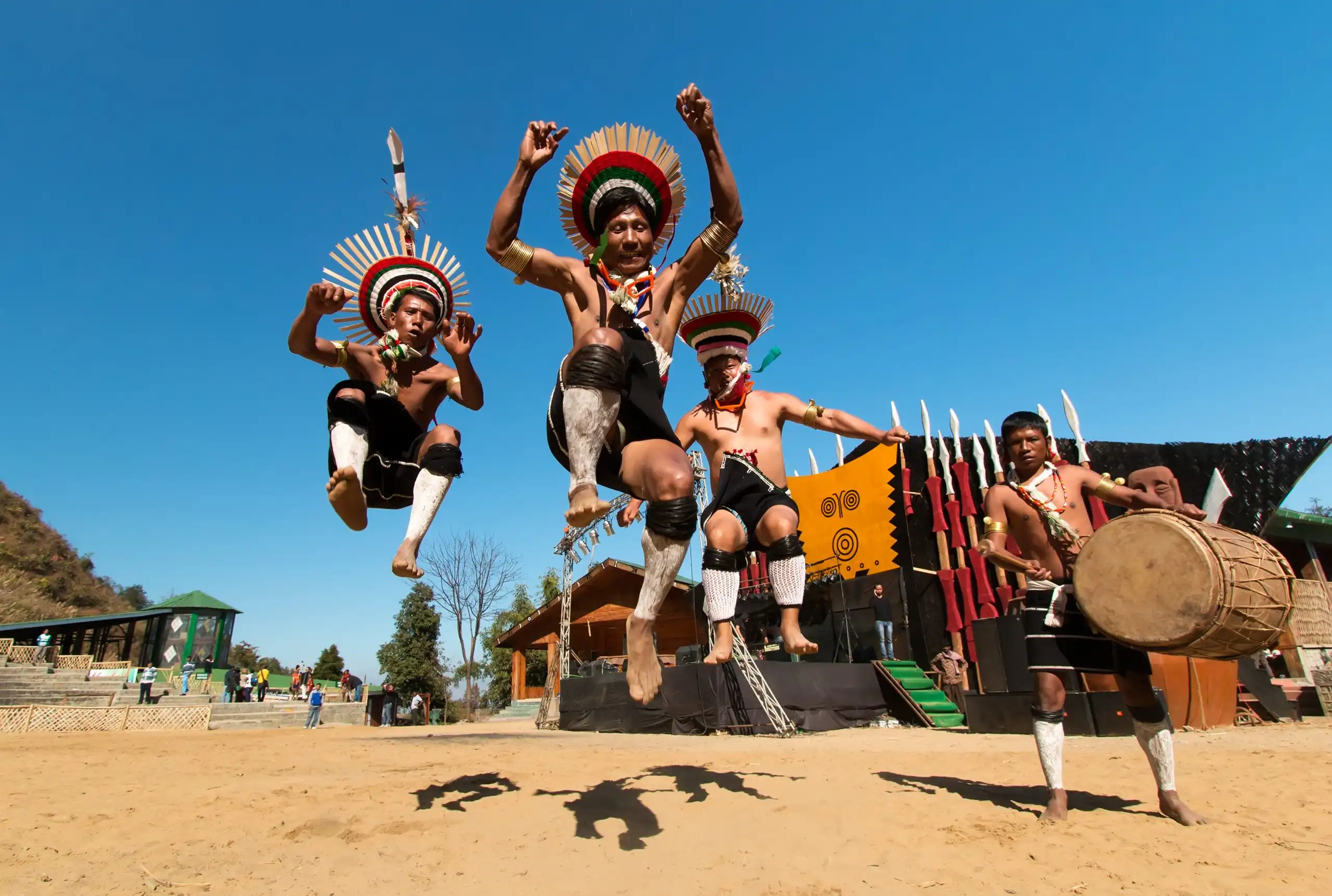
Kuki
District: Peren
Main Festival: Mimkut
When: 17 January
The Kukis, also known as the Chin in the Chin state of Myanmar and as Mizo in the Indian state of Mizoram are a number of related Tibeto-Burman tribal peoples spread throughout the northeastern states of India, northwestern Burma, and the Chittagong Hill Tracts of Bangladesh

Kachari
District: Dimapur
Main Festival: Bushu
When: Last week of January
Post harvest festival celebrated on an auspicious full moon night after paddy has been harvested, threshed and stored
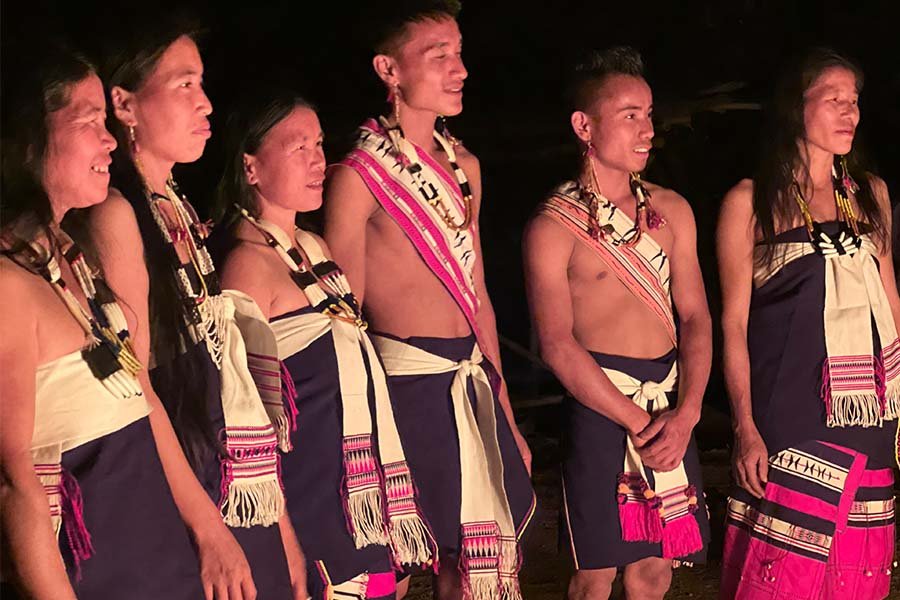
Zeliang
District: Peren
Main Festival: Hega
When: 10-15 February
The Zemes that inhabit in Nagaland call themselves Zeliang and those of the Manipur borders are called Zeliangrong. There are many different tribes that speak Zeme Naga which is now considered to be an endangered language.

Angami
District: Kohima
Main Festival: Sekrenyi
When: 25-27 February
One of the major tribal communities of Nagaland is the Angami Tribe. The territory of the Angamis is made up of the present Kohima district, which is divided into four regions; Southern Angami, Western Angami, Northern Angami and Chakhro Angami.

Konyak
District: Mon
Main Festival: Aoleang Monyü
When: 1-2 April
The Konyak are recognised among other Naga by their tattoos, which they have all over their face and hands. Facial tattoos were earned for taking an enemy’s head. The Konyaks can be found in Myanmar, in the Tirap and Changlang districts of Arunachal, and in the Mon district of Nagaland.
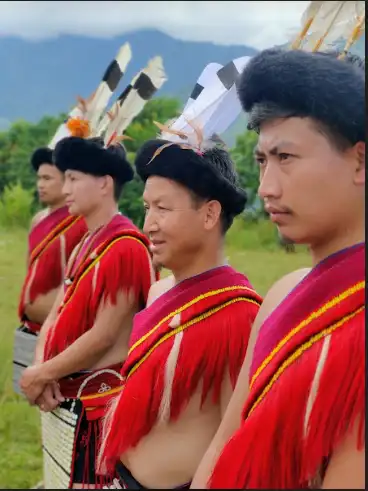
Sumi
District: Zunheboto
Main Festival: Tuluni
When: 8 July
The Sumis mainly inhabit the Zunheboto district, although many have spread to other districts within Nagaland. They are also one of the most united and the most aggressive tribe, but despite their ferocity and aggressive nature in warfare, they are also known for their simplicity and honesty. Their loyalty towards their tribesmen and friends is unparalleled.
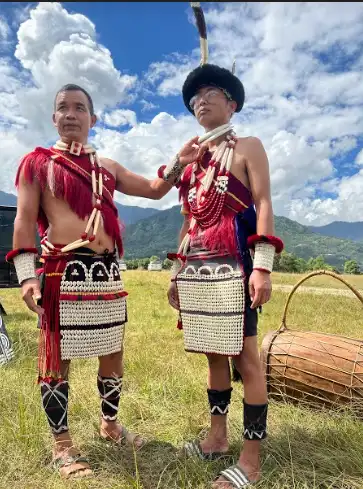
Ao
District: Mokokchung
Main Festival: Moatsü
When: 1-3 May
The Ao is one of the major Naga tribes and they occupy the territory from Tsula (Dikhu) Valley in the east to Tsurang (Disai) Valley in the west in Mokokchung district. They are well known for multiple harvest festivals held each year.
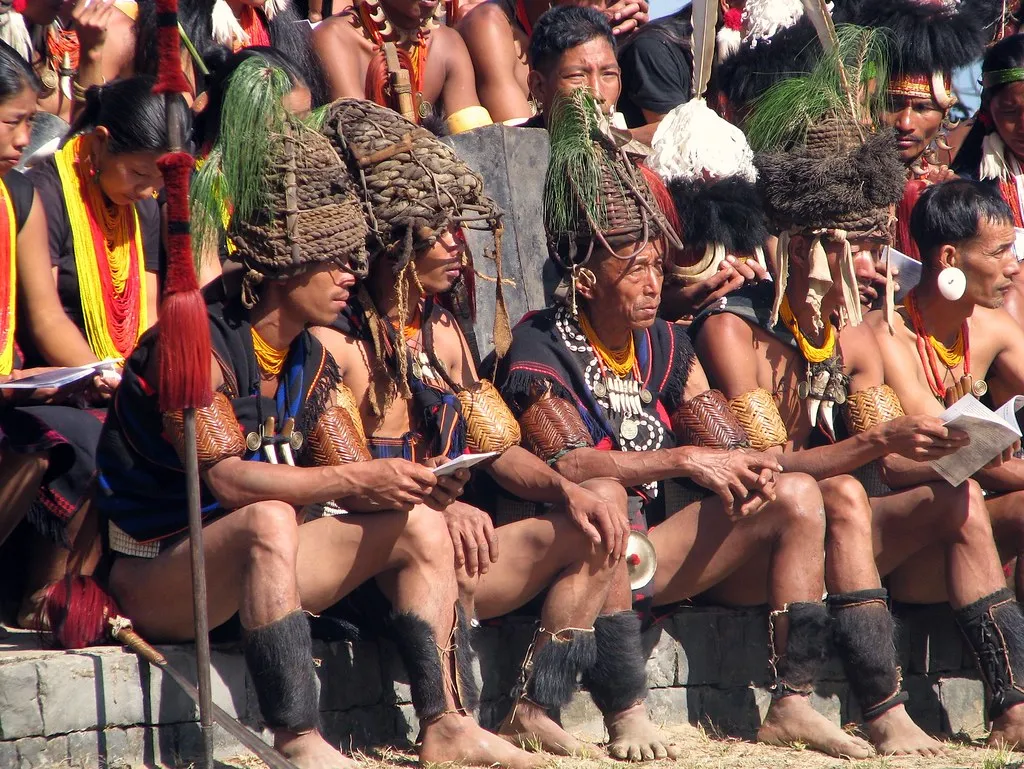
Khiamniungan
District: Tuensang
Main Festival: Miu
When: 5 May
Khiamniungan is one of the minor tribes in Nagaland, mainly found in the Tuensang district and the adjoining areas of Burma.
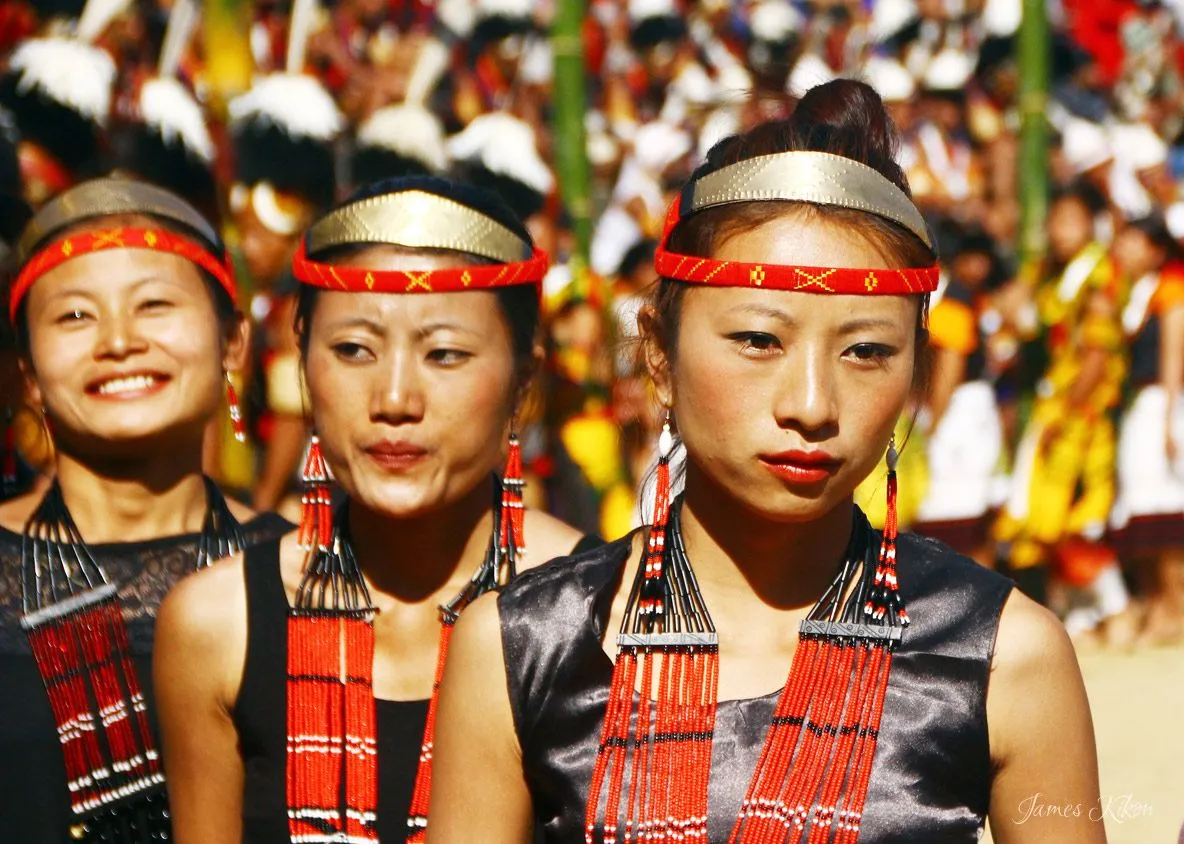
Phom
District: Longleng
Main Festival: Monyü
When: 1-2 April
Their traditional territory lies between that of the Konyak in the north-east, the Ao in the west and the Chang in the south. Yongnyah is the largest Phom village. The origin of the Phoms, like that of other Naga tribes, is uncertain. One oral folklore of the Phoms states that their ancestors originated from stones.
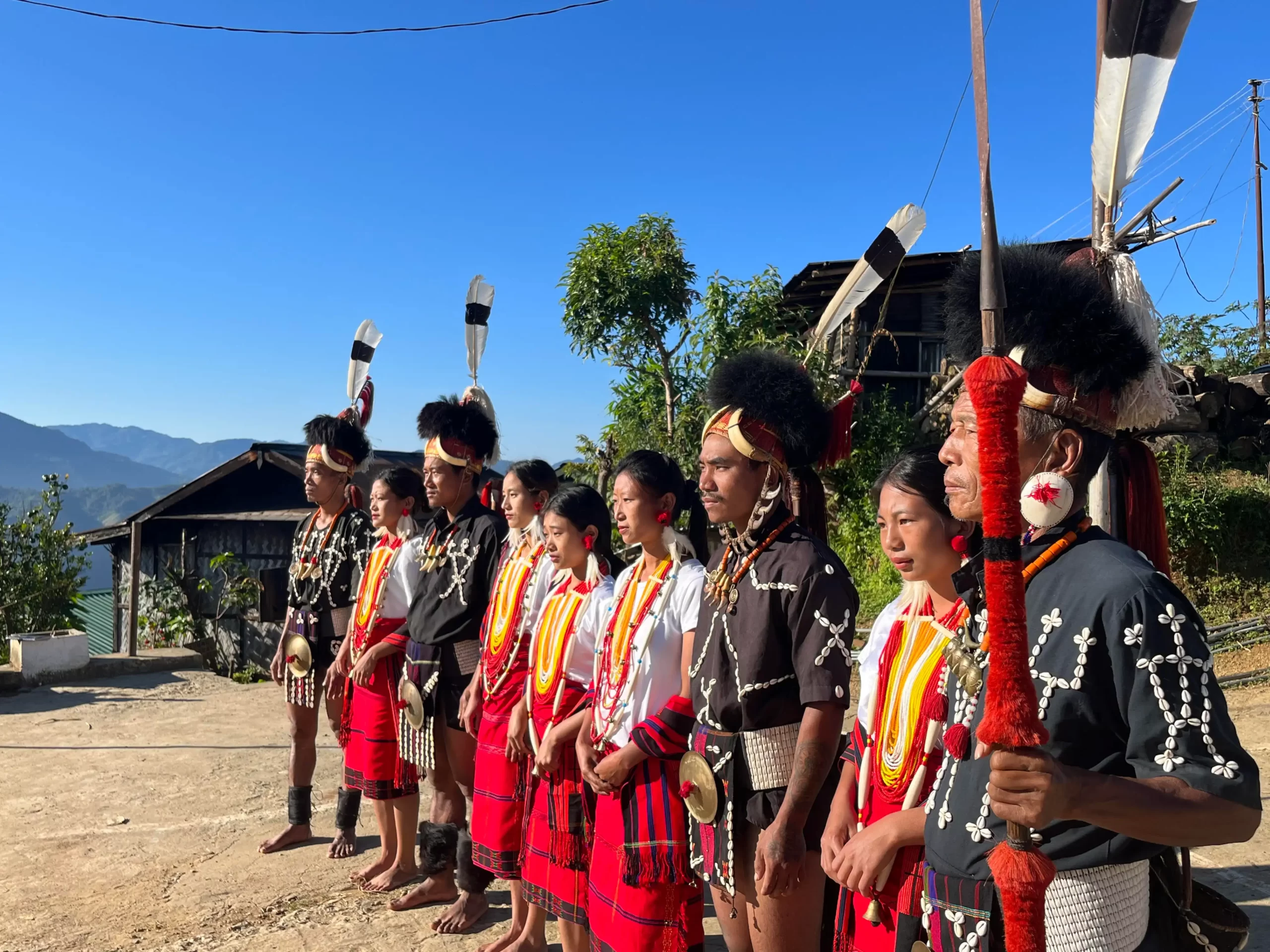
Chang
District: Tuensang
Main Festival: Naknyulem
When: 31 July
It is believed that the Changs emerged from a place called Changsangmongko, and later settled at Changsang. The word Chang is said to have derived from the word chognu (banyan tree), after a mythical banyan tree that grew at present day abandoned Changsang.
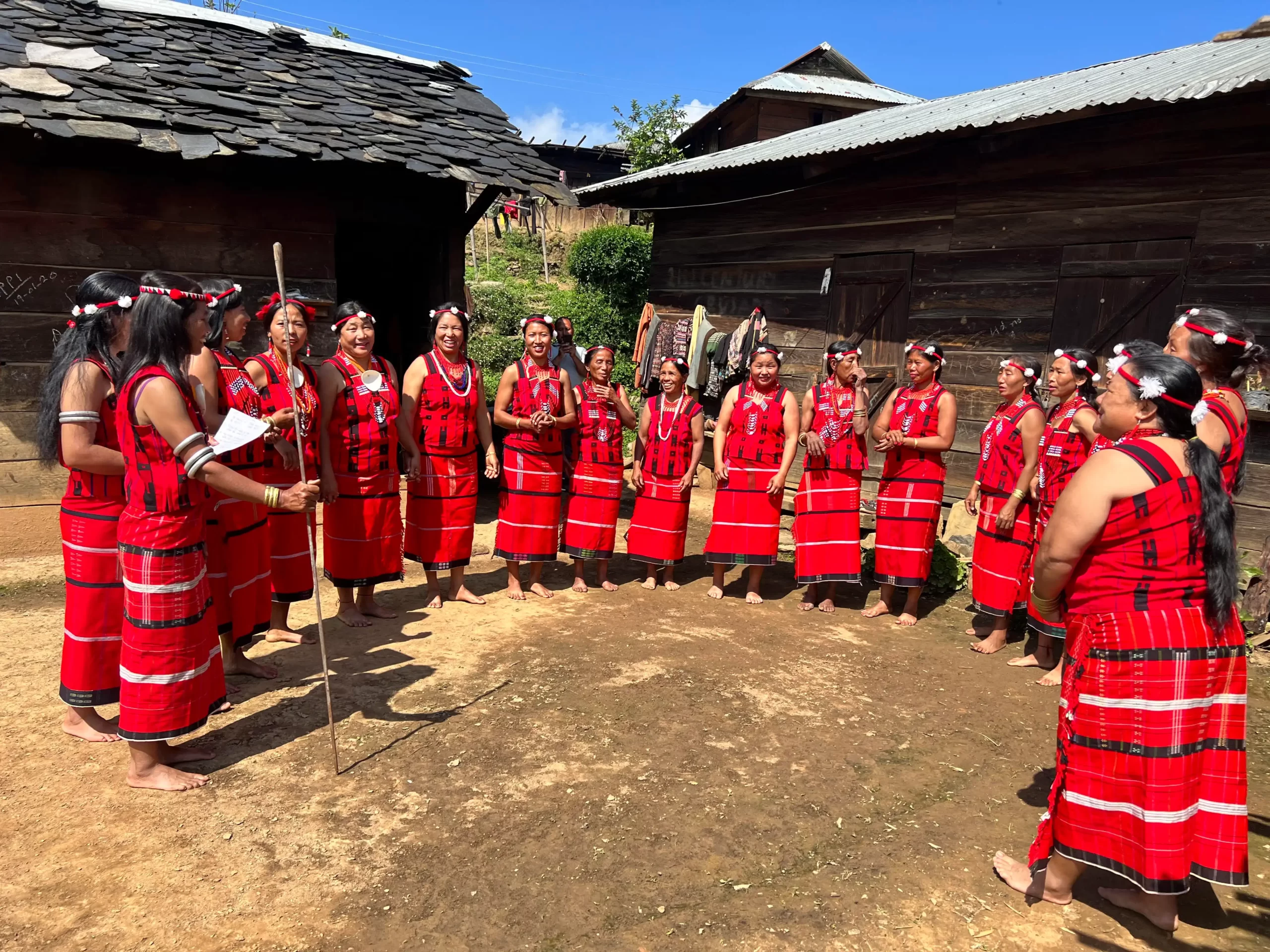
Yimkhiung
District: Kiphire/Tuensang
Main Festival: Metumniu
When: 4-8 August
Yimchunger is one of the major Naga tribes of Nagaland and the Tuensang district within India and areas of Burma. According to the Yimchunger tradition, the tribe emerged at a village called Moru, and then came to the Jure village.
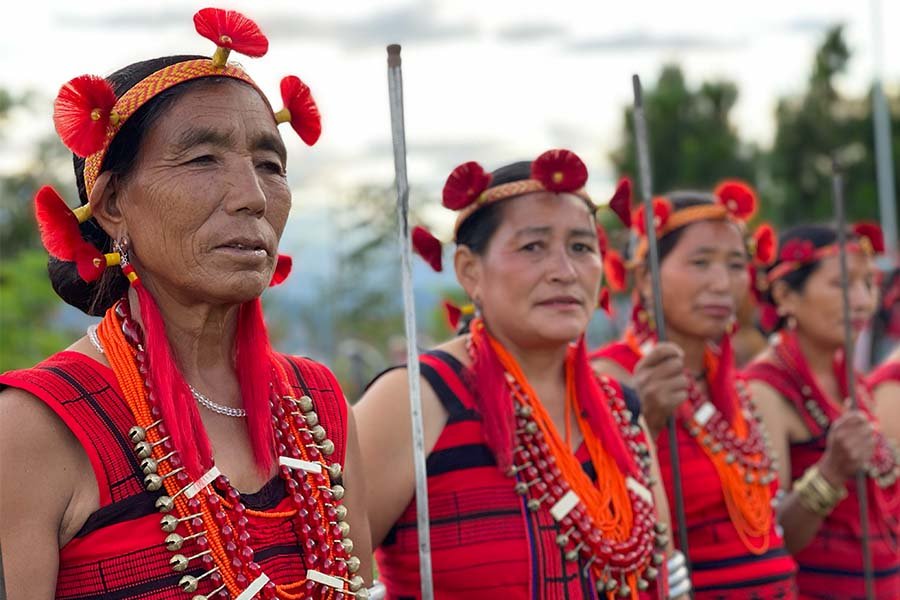
Sangtam
District: Kiphire/Tuensang
Main Festival: Mongmong
When: 3 September
The Sangtam people are one of the major tribes in Nagaland inhibiting the southern part of the state under the Kiphire district and the Northern part in the Longkhim-Chare sub-division of Tuensang district.Like many other tribal groups in Northeast India, they practice jhum, or shifting cultivation.
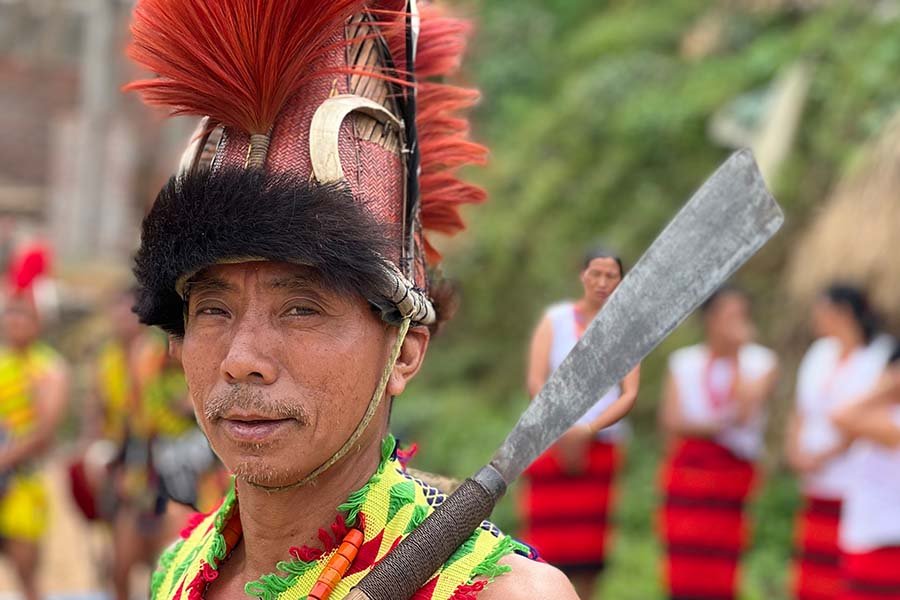
Pochury
District: Phek
Main Festival: Yemshe
When: 5 October
This Naga tribe inhibits the eastern part of the Phek district, centered on the Meluri town about 170 Km from the state capital Kohima. The Pochury is a composite tribe formed by three Naga communities: Kupo, Kuchu and Khuri. The word Pochury is an acronym formed by the names of three native villages of these tribes: Sapo, Kechuri and Khuri.
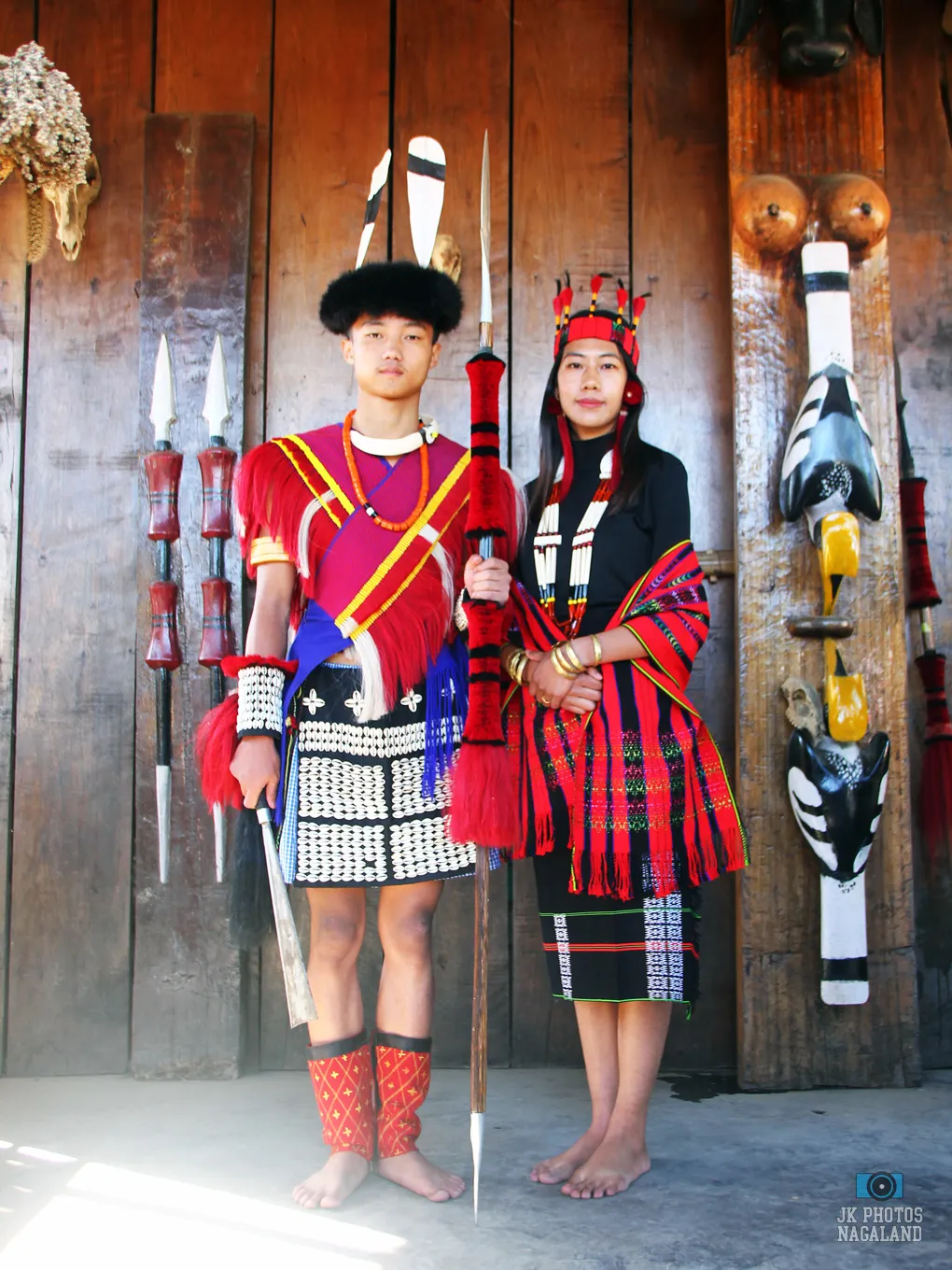
Lotha
District: Wokha
Main Festival: Tokhu Emong
When: 7 November
Lotha is the name of a major Naga tribe inhabiting the Wokha district. Locals mention that the Rengmas and the Lothas were once part of a single tribe. There are oral records of a mighty struggle between the combined Rengma villages, and the Lotha village of Phiro. Like many Nagas, the Lothas practiced headhunting in the olden days. After the arrival of Christianity, they gave up this practice.
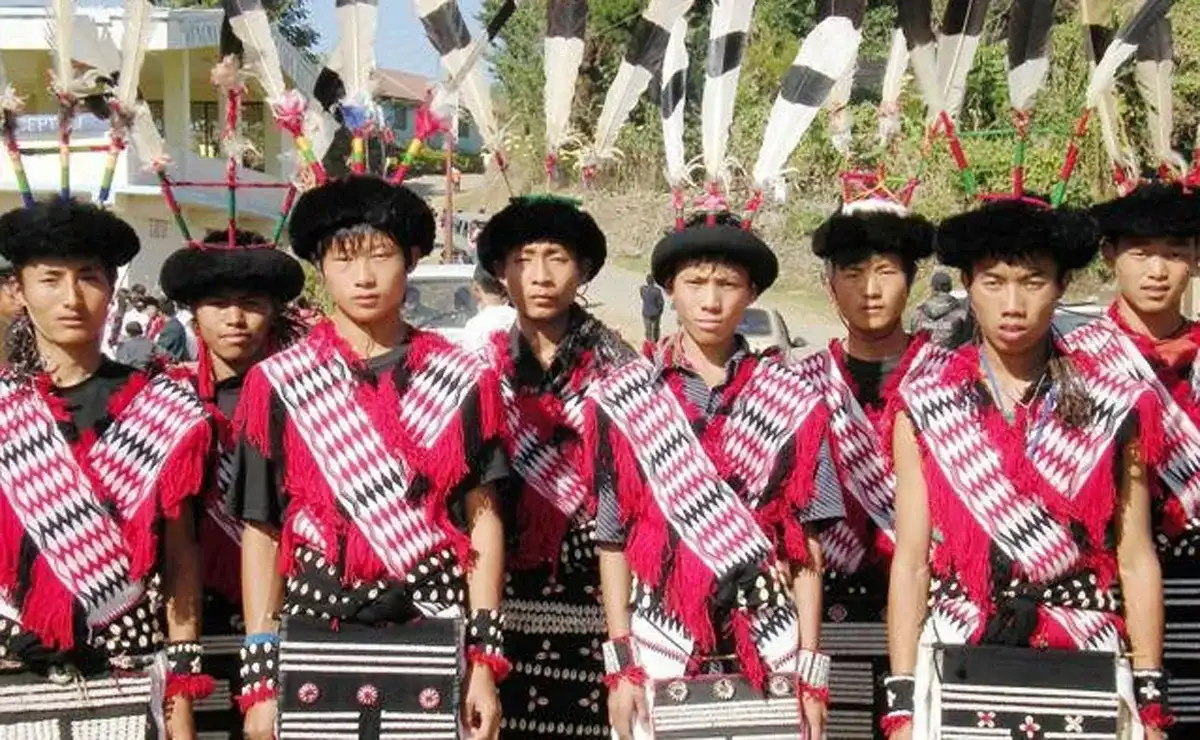
Rengma
District: Tseminyu
Main Festival: Ngada
When: 27-28 Nov
Rengma Tribe are found in both Nagaland and Assam. The community is further divided into two categories – Eastern and Western Rengma. According to the local folklore, the Rengmas and the Lothas were once part of a single tribe. There are also oral records of a mighty struggle between the combined Rengma villages, and the Lotha village of Phiro.
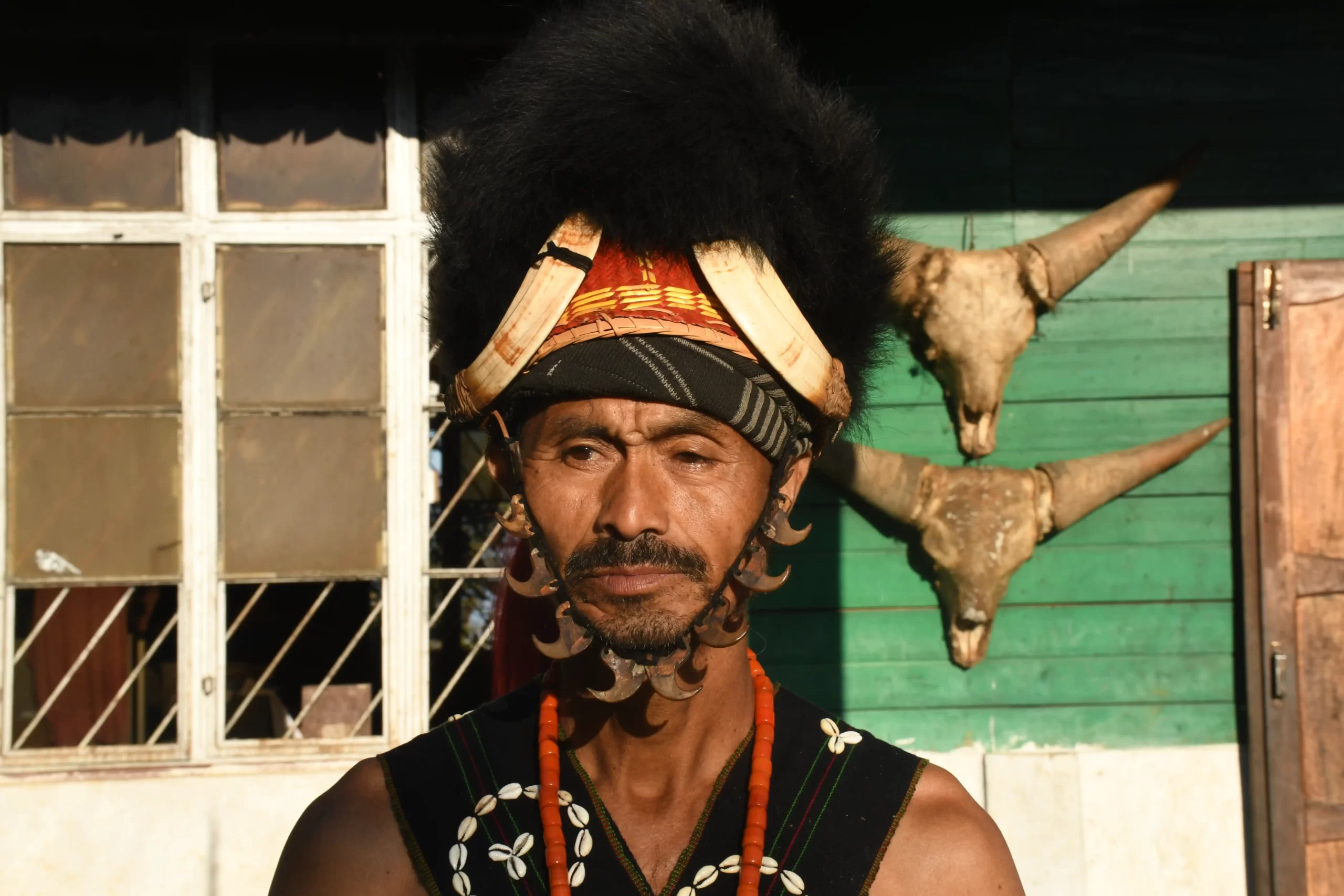
Tikhir
The word "Tikhir" means "Dew People", meaning they were the first settlers of the place as they brush up the dewdrops. The Tikhir (one of the Tribes of Nagaland) like the other Naga Tribes came and migrated from different places of South-East Asian Countries The geographical and natural boundary of the Tikhir Territory is contiguous and stretches North-South in the eastern most part of Nagaland (India) bordering Myanmar.


